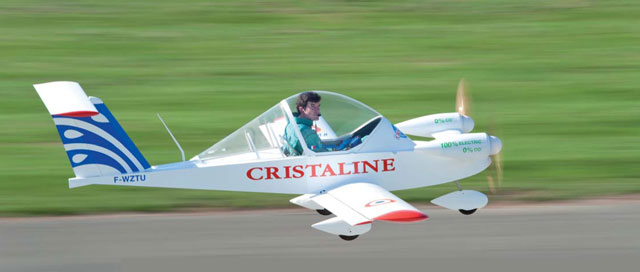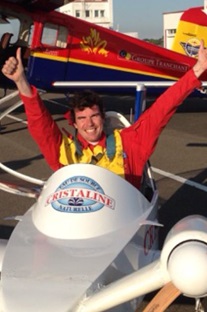
Airbus’ electrically powered E-Fan twinjet crossed the English Channel on July 10, but the story certainly hasn’t ended there. Airbus says that the E-Fan was the first electrically powered airplane to make the flight—from Lydd in the United Kingdom to Calais, France.

Or was it? Hugues Duval says he made a Channel crossing the day before—in his Cri-Cri E-Cristaline airplane, powered by twin 15-horsepower Electravia electric motors. But there’s a twist to his flight that promises to keep this story alive.
In a telephone interview, Duval said that his flight did not begin with a conventional takeoff. Instead, his Cri-Cri was launched mid-air from a Broussard MH1521, a 1950s French observation and liaison warbird powered by a 450-hp Pratt & Whitney R-985 Wasp radial engine. Authorities prevented Duval from taking off from an airport for “administrative reasons,” Duval said. Reasons that he wouldn’t explain.
The Cri-Cri was released from the Broussard at a “quite high” altitude (the Broussard’s ceiling is 14,500 feet) near Kent, England according to Duval, who asserted that the world’s aviation record-keeping organization, the Fédération Aéronautique Internationale, and the Aeroclub de France, will grant him recognition as being the first to cross in an electric airplane. Duval also landed in Calais.
Duval said that the launch procedure will carry as much validity as the Wright brothers’ use of a drop-weight catapult did back in 1903. The Wrights’ being catapulted down a launch rail was considered the legitimate start of a flight back then, and so Duval believes his air launch will be treated similarly.
Airbus is unfazed by all this, and continues to milk its crossing for publicity.
But Airbus’ achievement has already been marred by allegations that it pressured electrical giant Siemens into demanding that Slovenian manufacturer Pipistrel not use its electric motor, citing safety concerns. (Siemens is an E-Fan sponsor, and provides electrical components to Airbus.) Siemens demanded the return of the motor, and banned Pipistrel from using it in the future.
Pipistrel had been planning a cross-Channel flight of its own, using its Alpha Electro two-seat trainer, which is powered by a Siemens 60-kilowatt/80-hp motor. That flight would have taken place on July 7, beating Airbus by three days.
Now Duval has added an extra act to the drama, which has taken on David versus Goliath overtones. But in this play huge conglomerates like Airbus and Siemens are pitted against a tiny Cri-Cri and small manufacturer of lightplanes.



